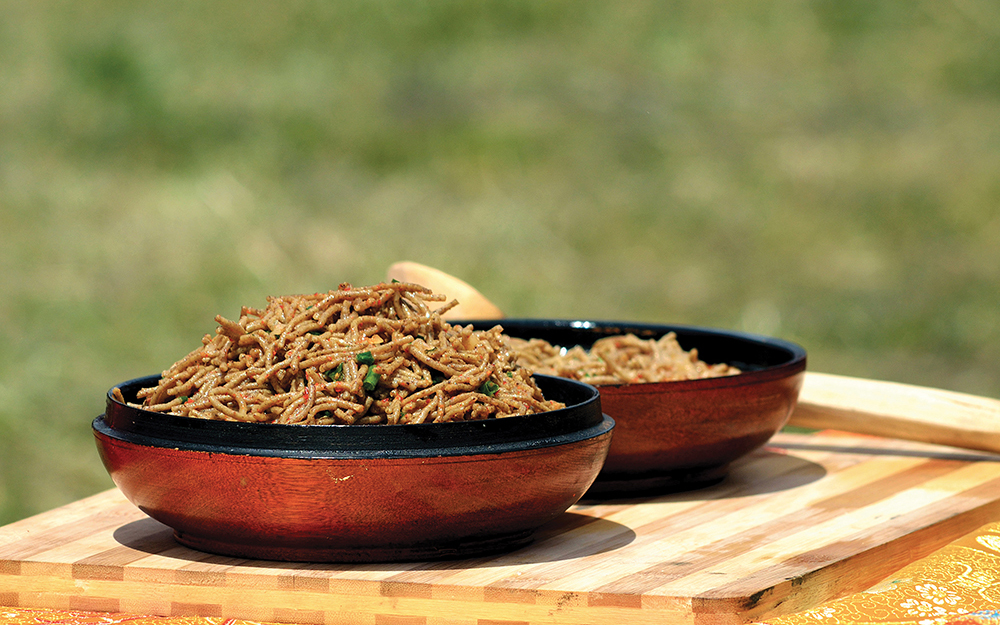Jigme Choden
Researcher, National Library and Archives of Bhutan, Department of Culture, MOHCA
In Bhutan, buckwheat (Fagopyrum esculentum) is grown in non-rice growing regions and highland areas where cultivating other cereals is limited due to agro-geo-climate variations. Buckwheat is used throughout Bhutan in myriad culinary preparations, and of these, puta, a buckwheat noodle from the Bumthang Dzongkhag (Bumthang District), is very popular.
Located in central Bhutan and ranging between 2,400 and 6,000 meters above sea level, Bumthang is extremely cold, and in ancient times, without the aid of modern machinery, roads, and skilled human resources, cultivating the land was difficult. However, because buckwheat is resilient and can grow in colder climates, the Bumtaps (people of Bumthang) could easily cultivate buckwheat and were able to prepare various delicacies out of it, especially puta.
Served with added condiments, puta is unique in its simplicity yet remains well liked by many. Puta is often served as a special dish to guests. During festivals and rituals, it is served more as a food offering (tshok) to the gods being invoked and to the priest (lam) presiding over the ritual.
Tshok is important in Buddhism for accumulating merit and for purifying and gradually diminishing the obscurations that hinder the attainment of Buddha’s nature. The offering is an act of selflessness, so it is important that the offerings be made whole heartedly and clean, with the purest of thoughts. Bumtaps still offer puta as a tshok during local religious festivals, so puta can be seen in some sense as a continuity of a traditional Buddhist practice.
While offering puta as a tshok is for merit and purification, it is also a gesture of people’s faith in the gods. Signifying the offering of their harvest, puta offerings are made in gratitude of the blessing and protection the gods have bestowed among the people. By offering puta to their gods, the people are expressing their hopes for a bountiful harvest the following year and good health for everyone in the village. In almost all the villages, local festivals and rituals are observed to pacify the god they believe has provided protection and supported their livelihood. During those rituals and festivals, puta is prepared as a special offering.

Mixing the puta ingredients © Jigme Choden
During local festivals and celebrations, puta is prepared as a special dish for village guests and among Bumtaps themselves as a celebration of their unique dish, a dish that they can proudly call their own. Preparing and serving puta as a delicacy for festivals and celebrations show that the dish occupies a significant part of the Bumtap community and culture. In this way, puta connects the people to their ancient land and traditions. After having toiled in the fields, the festivals and celebrations provide a chance to gather, socialize, and share joyful times.
Zhuri Village, Bumthang, provides a good example of the importance of community in terms of puta. Zhuri has a festival during which a particular household prepares puta and goes around to all the households handing it out. In this way, puta provides a special way of bonding and promotes harmonious living in the village. And it is such kind acts of offering that emphasize the uniqueness and symbolic importance of puta in the lives of Bumtaps.
Puta has been a part of the daily meals of the people of Bumthang for a very long time and has provided a distinct identity for the region. It isn’t surprising then that Bumthang is best known for its puta traditions.







